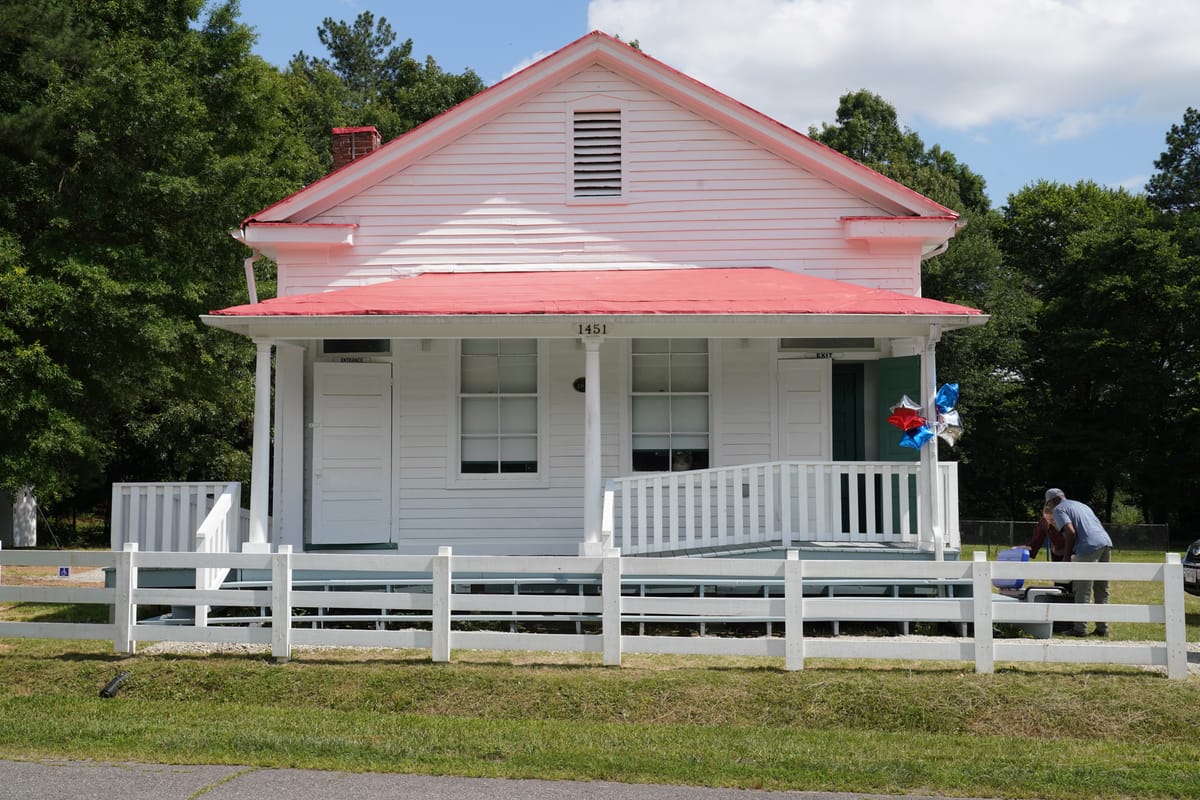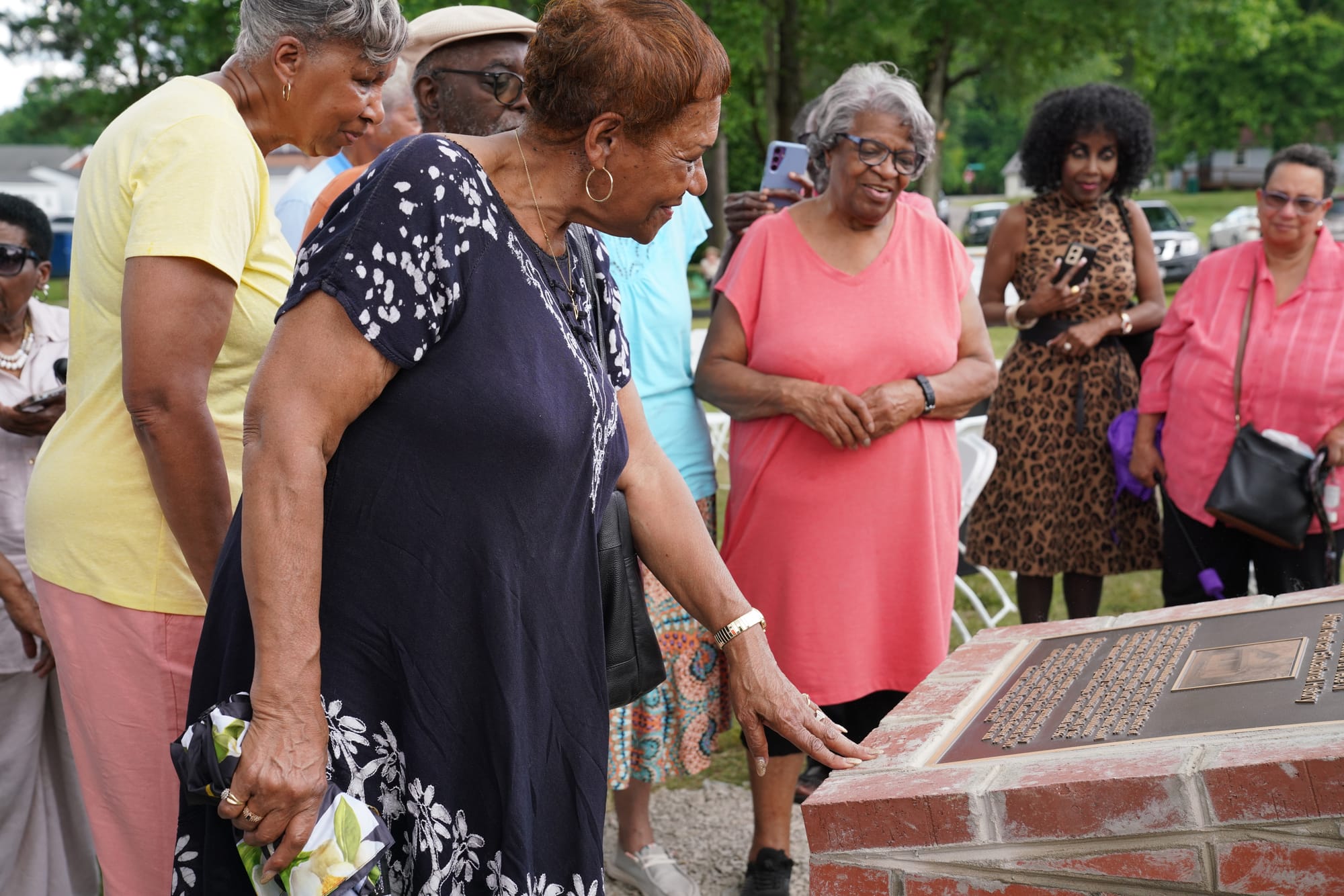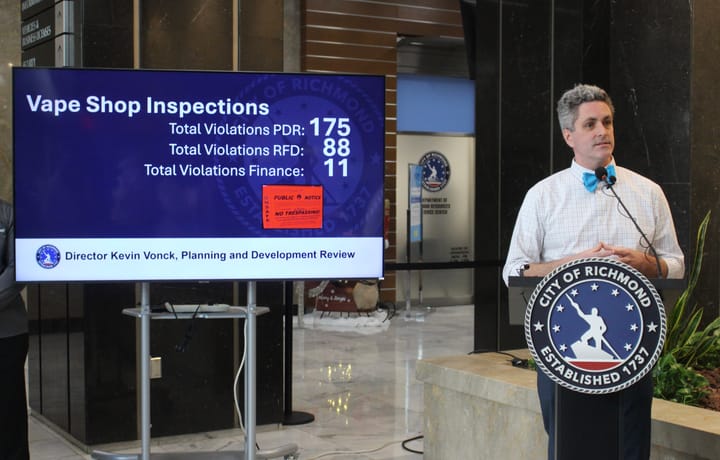
‘You can’t just discard it’: Varina's Chatsworth School unveils historic plaque
Every day, when he was in the first grade, Lloyd Smith looked forward to one thing while in school: lunchtime.
Smith attended Chatsworth School, a one-room schoolhouse that served the children of Black slaves in Henrico County’s Antioch Community, located in Varina. The building was “in shambles,” he described, as it didn’t have plumbing, electricity, running water, or a cafeteria. So when the 25-30 students brought out their lunch bags, the delicious aroma of different dishes – fried pork chops, chicken, peanut butter and jelly sandwiches, bologna, bananas and oranges – filled the air.
“It was just all conglomerated there together for about a half an hour to 45 minutes and you were in heaven,” he said.
Smith recounted that memory 70 years later at a plaque unveiling ceremony, attended by about 30 people, for the historic school. The school is now a museum, available for people to see.
“The history of where we come from should never be lost,” said recently retired Pastor James Sailes of the Antioch Baptist Church.

The school was first organized in 1908 and owned by members of the Grand United Order of Odd Fellows, a historical mutual aid organization supporting African American people. The organization transferred ownership of the school to Henrico County in 1915, which operated it until 1956. One teacher taught students in grades one through four before the integration of public schools, causing students to assemble and engage in group study to manage the classroom.
“This moment of how far we’ve come – it’s a renewed call to continue the work,” said Henrico County School Board Member Alicia Atkins.
It was one of the 23 schools supervised by Virginia E. Randolph, who oversaw Black schools in Henrico County. Chatsworth received financial support from the Rosenwald Fund and Anna T. Jeanes Fund with Randolph’s help.
Randolph “deemed it necessary for them to be educated so that they could maintain and sustain themselves through employment,” said Stephenne Belle, a volunteer organizer who helped make the school a historic marker and museum.
Sailes said he fears that younger people attending school today are “disconnected from the struggle” Black people experienced when receiving education during that time. It’s the reason why the theme for the event was “reawakening the voices of our path of virtue,” for people to understand its history.
Belle said that students came from neighboring areas, like the St. Paul and Drinkard Town communities, which could at times be a 30 to 40 minute trek each way. In place of backpacks, she said students used their belts to strap around their books to carry them to school.
“Hopefully, they will be able to develop an appreciation for what they have today for education,” Sailes said, referring to modern students.

Years after its closing, the building was neglected and in need of repair, as it was used by individuals for storage. The Antioch Baptist Church acquired it in 2000, renovating it and placing it on Henrico County’s historical register in 2003.
Sailes, Belle and other organizers began working in 2019 to put the school on the state and country landmark registries, which occurred in 2022.
Belle described the building as just more than a schoolhouse – it “was an anchor in this community.” Despite the lack of running water, plumbing and electricity, the building served as a space for worship for churchgoers of the Antioch Baptist Church, as well as an occasional health clinic to conduct screenings of children for illnesses like tuberculosis.
“You can’t just discard it,” Belle said. “Chatsworth has a lot of meaning and purpose and stands on solid ground. It’s here and it’s a representation of what occurred during that period of time.”
The Richmonder is powered by your donations. For just $9.99 a month, you can join the 1,000+ donors who are keeping quality local journalism alive in Richmond.
Smith, one of the former students who attended the event, said that he was happy to see the building being recognized, despite the challenges that came with the building.
“You just kept going,” he said. “You were with your friends and your buddies, and you’re having a good time.”
The museum itself contains photos of the schoolhouse before renovation, students that attended and their homework, books used in the class, and more information about the building. The museum is open to the public, and tours can be made by appointment (chatsworthschoolvarina@gmail.com).
Belle said that students from different schools, including those from Virginia Union University, have visited the building.
Contact Reporter Victoria A. Ifatusin at vifatusin@richmonder.org






